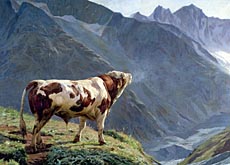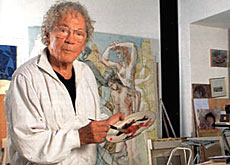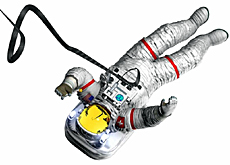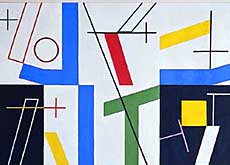Neglected Swiss artist rediscovered in Lausanne

Few people outside the art world have heard of Eugène Burnand, let alone seen his paintings. Yet at the turn of the 20th century, he was considered one of Europe’s leading artists.
With a major retrospective of his works, Lausanne’s cantonal fine arts museum is now hoping to restore the Swiss painter’s reputation.
The story behind the exhibition is an intriguing one. Burnand (1850-1921) was a contemporary and compatriot of Ferdinand Hodler, who was also highly acclaimed throughout Europe – and whose reputation continues to grow.
Both artists studied in Geneva under the landscape painter Barthélemy Menn. They knew each other and at one point in the early 19th century their careers converged when they were commissioned to design new Swiss banknotes.
But their respective artistic styles were very different, and while Hodler’s reputation steadily grew, Burnand went on to lose favour within the art establishment.
To advocates of modern art he became a counter-model, whose landscape style was dismissed by critics at the time as “photographic”.
Devout Protestant
A devout Protestant, his religious paintings of Jesus, his disciples, supporters and persecutors – among the highlights of the Lausanne exhibition with their extraordinary faces and gestures – were also out of fashion in an art world which had turned against religious iconography.
“People couldn’t understand why a Protestant painter was creating such large paintings,“ curator Philippe Kaenel told swissinfo.
“They asked themselves why he did it, because in the religious climate of the time, the pictures could not have been destined for Protestant churches.”
Meanwhile, Burnand had been showered with honours by a French art establishment which also invited him on numerous occasions to be a member of juries judging the works of other artists.
In fact his Swiss rural scenes, landscape painting, portraiture and religious art – all represented in Lausanne – can now be seen, a century after they were dismissed, as outstanding examples.
Long overdue
The exhibition includes portraits in crayon and pastel which alone are worth a visit to the museum.
Kaenel says it is now time to take another look at Burnand with eyes that are less partisan and less naïve: “I hope the exhibition makes visitors take a fresh look at his paintings, not just their subjects, and say that this looks like reality, but just look at they way they are painted.”
The Eugène Burnand retrospective at the cantonal fine arts museum in Lausanne ends on May 23.
swissinfo, Richard Dawson in Lausanne
Swiss painter Eugène Burnand (1850-1921) is less well-known than his contemporary and compatriot Ferdinand Hodler.
Both studied in Geneva under the landscape artist Berthélemy Menn.
For a time, Burnand was considered one of Europe’s leading artists, and was showered with honours by the French art establishment.
He fell out of favour within the art world because his rural scenes and landscapes were considered too “photographic” and therefore out of step with the emerging modern art movement.
A devout Protestant, his religious paintings also came in for criticism.

In compliance with the JTI standards
More: SWI swissinfo.ch certified by the Journalism Trust Initiative



You can find an overview of ongoing debates with our journalists here . Please join us!
If you want to start a conversation about a topic raised in this article or want to report factual errors, email us at english@swissinfo.ch.